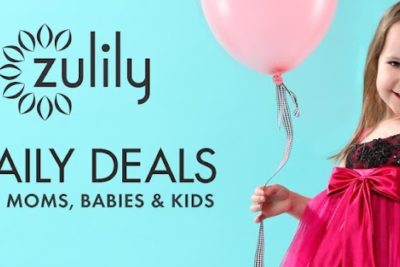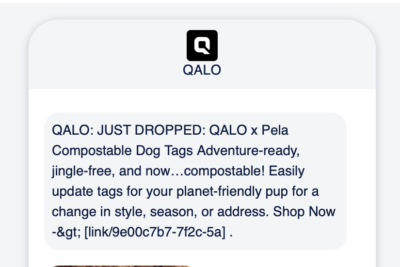Welcome emails often boast the highest open rates out of your entire (non-transactional) email program. Why? Because whenever someone joins your mailing list your brand is top of mind. But how, exactly, do you create a successful email that drives sales?
Research from Marketing Sherpa shows that most subscribers want to receive promotional emails at least once a month. You can tie this directly with your welcome email strategy and incentivize new subscribers to purchase early on by sending them some form of promotion or discount when they join your email list. Key elements of a welcome email, like the calls-to-action and how you frame your offer, can also have a huge impact on getting new subscribers to make that first purchase, as Uniqlo’s head of marketing suggests. The key is to strike a balance between not giving away too much too soon, but giving enough to incentivize the first purchase.
Incentive being the name of the game, let’s analyze how top online retail companies treat new subscribers.
Discounts count
Retailers across the board offer different incentives to drive email signups, and the discount is by far the most popular one. Some high-end department stores like Bloomingdale’s and Saks Fifth Avenue offer a first purchase coupon to incentivize email signups, while others such as Lord and Taylor and Lululemon stay true to their lifestyle brand and don’t offer a discount — they trust that the quality of their products alone is enough to get people to sign up. Stores geared toward the everyday consumer, such as Bloomingdales and H&M, make capturing visitor email addresses a priority by providing generous incentives. Next, we’ll explore when each of these companies send their welcome emails along with their corresponding offers.
After signing up for Bloomingdale’s emails, it’ll take over an hour for you to receive their welcome email. This email includes the first purchase coupon that is discreetly advertised at the bottom of their website. While the timing feels long, the company succeeds at delivering the promised 10% off. They also include relevant content by highlighting newly launched products.
By contrast, when you visit the Saks Fifth Avenue website, you immediately get a popup modal asking you to sign up in exchange for 10% off your first purchase. Compare this to Lord and Taylor, which not only doesn’t offer any kind of incentives to sign up, but it also doesn’t send its welcome email until a whole day later. If someone from Lord and Taylor is reading this, it may be interesting to A/B test the time of delivery of the welcome email. Our experience suggests that open and click rate increases when this email is sent earlier on (e.g. 5 minutes after signup).
H&M has a great way to get shoppers to sign up for its emails, although less typical. On the homepage, there’s a simple link to sign up for its emails and, once you click on this link, you are directed to their newsletter signup page. Here you can see H&M offering a generous 20% off coupon.It also highlight the benefits of signing up, which include style tips, fashion news, and ongoing company initiatives information. The added newsletter description helps make this exchange feel less transactional (v.s. just having “signup today to get 20% off”).
After signing up for H&M you immediately get its welcome email which includes instructions on how to use the coupon — which is valid in-store and online. This is noteworthy as most coupons from welcome emails can only be redeemed online, and usually exclude a ton of items, like in the case of Bloomingdale’s. This can be discouraging — and frustrating — for prospective customers. Everyone hates reading and dealing with fine print exceptions.
The most important thing to keep in mind is that your welcome email should fulfill anything that was promised to get the visitors to sign up in the first place — like a 10% discount. When crafting your welcome email promotion, if you’re looking to include one, aim to strike a balance: you can’t give too much right away. It should be just enough to get that first purchase. Also, remember to communicate the value of your brand as briefly as possible. Using images and icons often helps reduce copy size while making it easier to digest the email content. Once you’ve signed up for a free MailCharts account you can see examples in our curated list of well over 100 welcome emails.
Giving a reason to buy
For retail companies, the welcome email’s main purpose is often to drive a sale. According to Justin Kerr, head of marketing at Uniqlo, if that’s the case, that intent should be very clear in everything from the subject line, to the body of the email. Some key features of your message will make that all the more possible. Here are some of the tips he shared at a recent event in New York:
Calls to action
Using a very clear call-to-action in your subject line lets your new subscriber know that you want them to make that first purchase, as well as give them the incentive to do so. While some companies choose “Welcome to X Company” in the subject line of their email, how much more incentivizing is it to say, “Start Enjoying These Exclusive Perks Now” like the Saks subject line below? However, giving a big discount to new subscribers can lead to a slippery slope.
The 1-2-3 Approach
You can’t go wrong with giving consumers the tools they need to value your brand. Below is Lord and Taylor’s welcome email, which makes great use of a clear call to action, as well as number the perks you’re about to receive because you signed up for their emails. That being said, an incentive to drive that first purchase is lacking.
Bottom-Up
Another great tip Kerr shared was the importance of having the most relevant information of your email as close to the top of the screen as possible. This Kate Spade email is great because it’s simple, on brand, and delivers its promise instantly. Unfortunately, the main purpose of this email (to drive a first-time purchase, incentivized by a discount) is lost at the bottom of the email.
Welcome emails have the power to push you campaign forward, and using them optimally can yield great results. Here are some quick tips you can apply to your welcome emails:
- Optimize your emails and landing pages for mobile devices. This can’t be stressed enough: online shopping, especially in smaller screens, is here to stay.
- Use your welcome emails to guide subscribers to the next step of your funnel. If the next step is a sale, consider sharing a discount code. If the next step is some form of engagement (e.g. start a wish-list) make sure that the benefits of doing so are clearly expressed.
- Keep the copy of the body to a minimum and clearly bold actionable items, especially if you’re providing a discount code. There’s nothing more pesky than needing to scan an entire email for a font size 6 coupon code — specially when the main purpose of the email was to provide the discount.
To help you craft an amazing welcome email, we’ve searched through hundreds of examples in MailCharts and handpicked our favorite 100+ emails. And if you want to dive deeper into the world of email strategy, check out our most popular post.
Editorial photo by Jon Tyson on Unsplash



